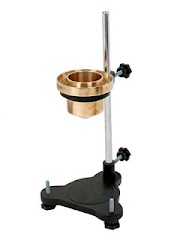The VITLAB® piston-operated pipettes are the ideal manual pipettes for demanding laboratory applications, and have all the features required by users: robust, with ergonomic shape and simple operation, completely autoclavable, highly accurate with simple calibration for long-lasting reliability.
The large, central pipetting button provides a uniform and smooth movement of the piston. For rapid replacement of the tips, the ergonomic eject button is placed easily accessible to the thumb on the front side. The VITLAB® micropipette is easy to use for both right and left-handers.
The 4-digit volume display with integrated zoom function and vertical arrangement of the numbers (top to bottom reading direction) ensures an optimal readability of the volume at all times. The desired volume can be set by rotating the volumesetting wheel with ease and precision. The clearly visible colour-coded frame of the volume display allows easy selection of the right pipette tip.
If necessary, e.g. for applications with non-aqueous solutions, the integrated calibration function allows an adjustment without tools directly in the laboratory. The corrosion- resistant piston and ejector ensure a long product life.
The micropipette is completely autoclavable at 121 °C (2 bar) according to DIN EN 285. Also available with DAkkS calibration certificate.
The large, central pipetting button provides a uniform and smooth movement of the piston. For rapid replacement of the tips, the ergonomic eject button is placed easily accessible to the thumb on the front side. The VITLAB® micropipette is easy to use for both right and left-handers.
The 4-digit volume display with integrated zoom function and vertical arrangement of the numbers (top to bottom reading direction) ensures an optimal readability of the volume at all times. The desired volume can be set by rotating the volumesetting wheel with ease and precision. The clearly visible colour-coded frame of the volume display allows easy selection of the right pipette tip.
If necessary, e.g. for applications with non-aqueous solutions, the integrated calibration function allows an adjustment without tools directly in the laboratory. The corrosion- resistant piston and ejector ensure a long product life.
The micropipette is completely autoclavable at 121 °C (2 bar) according to DIN EN 285. Also available with DAkkS calibration certificate.
Included in delivery
VITLAB® micropipette, silicone grease, sample bag with pipette tips, quality certificate, and operating manual.
Types / Sizes
| Volume µl | A ≤ ± % | Accuracy ≤ ± µl | CV ≤ % | Coefficient of variation ≤ µl | Tip μl | PU | Cat. No. |
|---|---|---|---|---|---|---|---|
| 0,5 - 10 | 1,0 | 0,1 | 0,5 | 0,05 | 20 | 1 | 1641000 |
| 2 - 20 | 0,8 | 0,16 | 0,4 | 0,08 | 200 | 1 | 1641002 |
| 10 - 100 | 0,6 | 0,6 | 0,2 | 0,2 | 200/300 | 1 | 1641004 |
| 20 - 200 | 0,6 | 1,2 | 0,2 | 0,4 | 200/300 | 1 | 1641006 |
| 100 - 1000 | 0,6 | 6 | 0,2 | 2 | 1000 | 1 | 1641008 |
| 500 - 5000 | 0,6 | 30 | 0,2 | 10 | 5000 | 1 | 1641010 |
| 1000 - 10000 | 0,6 | 60 | 0,2 | 20 | 10000 | 1 | 1641012 |
Calibrated to deliver ‚Ex'. * Accuracy and coefficient of variation based on the nominal volume (= maximum volume) printed on the instrument, if instrument, environment and distilled water are at the same temperature (20 °C), as well as uniform, jerk-free handling. The margins of error are under those specified in DIN EN ISO 8655-2.



